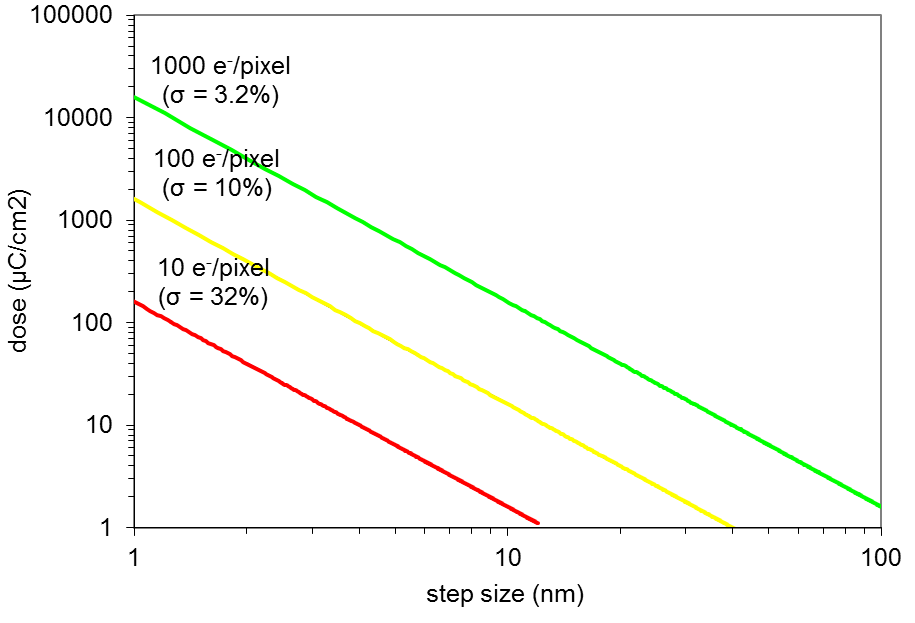Shot Noise Guide
Shot noise is the statistical variation in the number of electrons coming down the e-beam column at a given current. It has a generally Poissonian (Gaussian) distribution, so the standard deviation of the variation in electron count is approximately √N, where N is the number of electrons in a given area/pixel/time period. It is, unfortunately, a statistically fundamental phenomenon, so dealing with it is an unavoidable fact of life when working with e-beam systems.
Obviously, the larger N becomes the less of an issue shot noise is. Unfortunately, when using small areal doses and fine step sizes during e-beam exposure, it is very easy to enter the regime where shot noise can cause significant variations in dose between “identical” pixels. The chart below illustrates the effect of shot noise (given here as pixel-to-pixel dose uncertainty) as a function of areal dose and beam step size.
The red line represents combinations of dose and step size where the number of electrons hitting each pixel (the N value) is 10, which means the pixel-to-pixel dose variation due to shot noise will have a σ equal to 32%. The yellow line indicates the 100 electrons/pixel threshold (σ = 10%), and the green line indicates the 1000 electrons/pixel threshold (σ = 3.2%).
The lower the shot-noise variation in your dose is, the more repeatable your exposure will be, so for best results it is highly recommended that you choose parameter combinations that put you above the 1000 electrons/pixel threshold.
Note that electron scattering, which tends to spread a single pixel’s dose out over a wide range, is actually helpful in this case, as it will help average out shot-noise variations. As a result of this, as well as the fact that the dose-development rate reaction of all resists is highly nonlinear, even a relatively high amount of shot-noise variation may have no visible effect on your final developed pattern. Even so, the shot-noise effect is worth keeping in mind and minimizing when possible; if a process seems to be inherently non-repeatable for no discernible reason, excessive dose variation due to shot noise may be the culprit.
